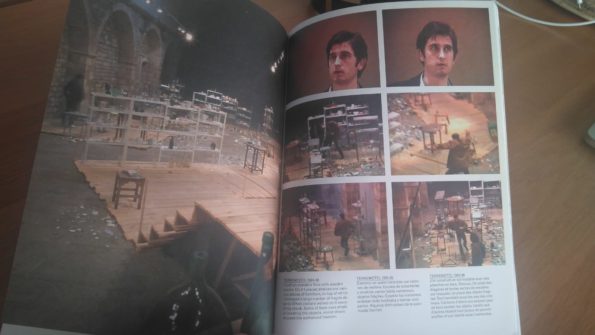Search
To search for an exact match, type the word or phrase you want in quotation marks.
A*DESK has been offering since 2002 contents about criticism and contemporary art. A*DESK has become consolidated thanks to all those who have believed in the project, all those who have followed us, debating, participating and collaborating. Many people have collaborated with A*DESK, and continue to do so. Their efforts, knowledge and belief in the project are what make it grow internationally. At A*DESK we have also generated work for over one hundred professionals in culture, from small collaborations with reviews and classes, to more prolonged and intense collaborations.
At A*DESK we believe in the need for free and universal access to culture and knowledge. We want to carry on being independent, remaining open to more ideas and opinions. If you believe in A*DESK, we need your backing to be able to continue. You can now participate in the project by supporting it. You can choose how much you want to contribute to the project.
You can decide how much you want to bring to the project.

Montse Badia sent me an e-mail asking me to talk about a piece that I considered iconic.
As I am very obedient, I immediately started thinking about possible works that would respond to that quality, that of being iconic.
So I suddenly realized that I didn’t know what qualities made a piece iconic. It seemed to me that the literalness of the iconic meaning was not what I later applied to distinguish iconic works from those that were not; that is, I don’t think Montse asked me which work in the history of art had been the most effective in becoming a sign, and that, furthermore, this sign had the capacity to be recognized by many as an element that glossed over an artist, a moment, a context or an artistic movement. I think Montse preferred that I present to her an example of a work of art that had the capacity to be memorable.
I kept making ranquings in my head. Trying to answer, of all the works I had seen, which one had managed to impact indelibly on my memory. In the absence of a better criterion for measuring the impact I had received from a work, I considered it a good idea to try to remember which one had impressed me the most. So, all those works that appealed to the intellect and those that participated in the relationship with a context, fell off the list.
And I decided that the work that would have left me with my mouth open would be my iconic work.
Well, in 1996 Tere Recarens presented the work Terremoto in La Capella with shelves full of glass and glassware, supported by unstable platforms that formed a circuit through which the exhibition could be viewed.
In 2005 the gallery Toni Tàpies published a book entitled heitere weitere polterei which contains most of the works that Tere Recarens had done up to then. One of the works is Terremoto. On a page of the book there is a photo of a general vision of the exhibition, on the next page there are 6 photos: the four lower ones are images of the activation of the piece, in them Miquel Baixas appears running and causing many of the glass objects to fall to the ground where they break into pieces and in the two upper ones (I imagine Tere looking at old recordings and photographs, looking for images of the public to see how they were affected by so much noise) I appear, with my eyes and mouth wide open.
Tere Recarens’ Terremoto is, without a doubt, my iconic piece.

Antonio Ortega is an artist and professor. On one occasion he was asked how it was that he liked to write and yet he did not like to read, to which he replied that for the same reason he liked to talk rather than to listen. Perhaps that is the reason why, whenever possible, he derives his artistic practice into lecture format.
"A desk is a dangerous place from which to watch the world" (John Le Carré)